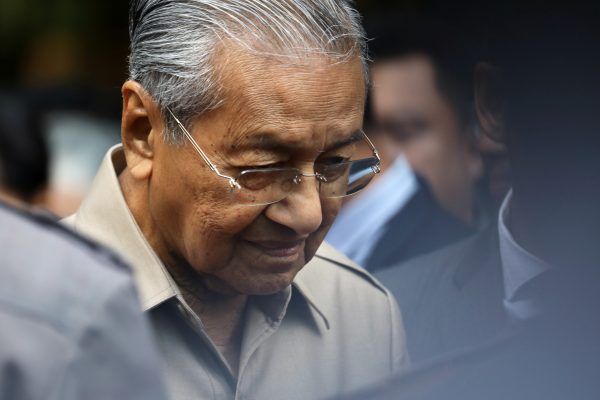Popular explanations for this reform failure focus on the institutional struggles of key actors in resisting reform programs. But they often do not consider the structural challenges to political reform rooted in capitalist transformation. This is not a simplistic economic determinist explanation of political reform but rather highlights the ways struggles over political institutions are filtered through changes in control and organisation of the capitalist economy.
In Sri Lanka the United National Party (UNP), the largest in Parliament, has links to old businesses in the mercantile sector and to sections of the urban-based middle class. But over the last few decades a new economic class has consolidated economic and political power, nurtured through market-oriented policies and access to state resources and projects, particularly related to property development and infrastructure. This new bourgeoisie has developed networks of politicians and key institutions, with their status cemented further by the civil war’s militarisation of the economy.
Growing authoritarian populism and ethno-nationalism more recently have enabled political alliances between this bourgeoisie and a wider range of other groups. Sri Lankan Prime Minister Mahinda Rajapaksa, the President’s brother, and his new party — the Sri Lanka Podujana Peramuna (SLPP) — is at the centre of these informal links.
Mahinda Rajapaksa was defeated in the 2015 Sri Lankan presidential election. But the victor Maithripala Sirisena and his prime minister Ranil Wickremesinghe’s reform coalition was ultimately unable to offer a coherent political alternative, despite election promises of strengthening democracy and social justice principles in the market. The networks, influence and infrastructure projects of the bourgeoisie continued.
The Central Bank bond scandal that engulfed the UNP demonstrates the pervasive influence of these networks in Sri Lanka. The scandal saw the son-in-law of Arjuna Mahendran, the Central Bank governor of the time, snapping up a sudden surprise issue of bonds.
These networks of class power underline why the reform agenda has encountered powerful political challenges. And the majority ethno-nationalist Sinhalese Buddhist ideological terrain, on which the Rajapaksas’ authoritarian populism thrives, obstructs even limited reforms which deal with the rights and grievances of minorities.
While Malaysia and Sri Lanka experienced different patterns of capitalist development, there are similarities between cases. In Malaysia, the reform coalition brought together Mahathir and his allies who split from the United Malays National Organisation (UMNO) party. They coalesced around their opposition to the now former prime minister Najib Razak and, as with Sri Lanka, their unexpected election victory gave rise to a coalition that promised economic and political reform. But in both Malaysia and Sri Lanka such diverse coalitions were not able to mobilise around a political project.
Mahathir’s policies consolidateda particular section of society around government-linked companies (GLCs) and their allies with strong ties to UMNO. This formed the basis of licenses and permits to key business groups.
The reform coalition promised to improve GLCs and their governance but these reform initiatives were stalled. One of Mahathir’s first acts was to transfer control of Malaysia’s sovereign wealth fund (Khazanah Nasional Berhad) from the Ministry of Finance to the Prime Minister’s office and his political allies. Mahathir himself became Chairman of Khazanah and political appointments to the GLCs continued.
In both Sri Lanka and Malaysia, business interests were able to obstruct even the limited programs of political reforms proposed by the coalitions of both countries. The Malaysian monarchy — particularly the Sultan of Johor — was central to the disintegration of the reform coalition. This is partly due to conflict over Chinese investment in Malaysia, such as the struggleover the US$42 billion Forest City project — a partnership between a company controlled by the Sultan and Chinese corporation Country Garden.
In Sri Lanka, the repressive apparatus, particularly the military with its close connection to the right-wing Sinhalese Buddhist civil society forces, was able to challenge the limited concessions made to the Tamil minority.
In both cases, the reform coalitions might have had tenuous parliamentary and cabinet majorities, but this was not necessarily key in the shaping of economic or political reform policies. Other arenas within the state, such as the monarchy, judiciary and the military, became more central in shaping policy.
The impetus within urban middle class forces for governance reform and transparency obscured the underlying social inequalities of an often precarious labour force. This had a racial and gendered impact. There is growing political awareness among poor Malaysians of Indian heritage, for instance, and rising indebtedness in the north of Sri Lanka. These groups might have propelled the electoral majorities of the reform coalitions but their interests ran against the neoliberal policies promoted by reformists in Malaysia and Sri Lanka.
Influential accounts within political science seek to explain democratic breakdown with reference to the erosion of democratic norms and consequent dysfunction of political institutions. The problem with this institutional dysfunction argument is that it tends to separate political institutions from the capitalist system they exist in and are consequently unable to grasp the social relationships and conflicts that underpin political institutions. Class dynamics played a significant role in propelling the traditional patronage networks that dominate politics in Sri Lanka and Malaysia today. The manner in which deeper structural faults can serve as a tool to sustain authoritarian politics and obstruct transition to democracy needs deeper consideration in political analysis of institutional failures.
Kanishka Jayasuriya is Professor of Politics and International Studies at Murdoch University.

